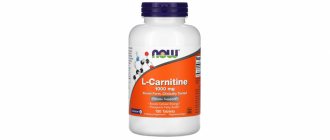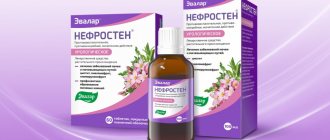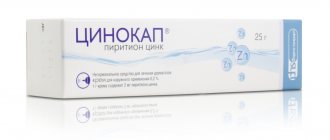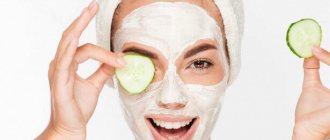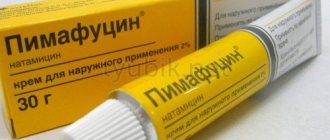Applying a tattoo to the body involves severe trauma to the skin. To speed up healing and prevent complications, it is recommended to use Dexpanthenol and follow certain care recommendations. The ointment will relieve inflammation, keeping the body image bright and clear for many years. Not only the appearance of the pattern, but also the condition of the skin depends on how the care will be in the first days. Therefore, proper treatment of the damaged area is of great importance.
What is the mechanism of drug action
The ointment has 3 main effects. It promotes tissue healing, affects metabolism and relieves inflammation. After contact with the wound area, the active substance interacts with the main proteins, for example, albumin. The active substance is involved in processes such as carbohydrate and lipid metabolism, the formation of hormones, mediators and porphyrins. "Dexpanthenol" has a regenerative effect not only on tissues, but also on mucous membranes. The drug also helps stabilize cellular metabolism and accelerate cell mitosis. Elimination is very fast.
The healing process of the skin at the tattoo site
If the tattoo is performed by a professional in compliance with all sterility rules, the healing period largely depends on the individual characteristics of the skin and proper care. The process takes on average 2 weeks. Correction of the pattern may be required, which is due to the individual characteristics of the structure of the skin tissue. As a result, the period of complete healing and recovery may be extended.
Dexpanthenol ointment for tattoos
The bandage applied by the artist is removed no earlier than 2 hours after the tattoo is completed. There may be unpleasant sensations in the form of redness of the skin, itching and pain, but there is no need to worry, this is normal. Strict adherence to the recommendations received after the session from the master is a guarantee of high-quality results. After approximately 2 days, the body image will become covered with a crust, and after 4 days the design will begin to peel off; all these manifestations will persist until the tattoo heals.
During this period, exposing the tattoo to any influence (sunbathing, visiting a sauna/bathhouse, solarium, actively exercising, scratching the affected area and peeling off the crust) is strictly prohibited. Hygiene rules must be strictly observed. Before getting a tattoo, you should study the contraindications for applying a design to the body, which can significantly increase the healing period.
When to use
"Dexpanthenol" is most often used to accelerate healing for minor microtraumas. Can be used on mucous membranes in the presence of erosions. The drug helps fight dry and cracked skin and is indicated for burns and minor abrasions. Sometimes the ointment is prescribed to patients with bullous dermatitis, suppuration and trophic ulcers. It is allowed to be used for the treatment and prevention of bedsores in bedridden patients. The ointment is applied to aseptic wounds for transplantations that do not take root well after operations, but constant monitoring by the attending physician is required.
Choosing a tattoo healing product
To speed up the healing of the epidermis, after a tattoo, ointments and creams are used that disinfect the surface, protect it from infection, and also activate cell regeneration and stimulate the formation of the stratum corneum. Special professional products and conventional medications with a wound-healing effect can cope with this task.
The first tattoo treatment is carried out in a salon. The master applies ointment to the finished drawing and sticks a protective film on top. The person carries out subsequent processing independently. To do this, you need to purchase a wound healing agent and use it 1-2 times a day to care for inflamed skin.
When choosing a medicine, you need to pay special attention to the composition.
It should include the following components:
- Provitamin B5, which has effective wound healing properties. Stimulates the improvement of metabolic processes in injured tissues, activating skin restoration.
- Antibacterial compounds, for example, chlorhexilin, which prevents infection of damaged skin.
The ointment for healing the tattoo area should not contain dyes or fragrances, so as not to irritate the injured epidermis.
How to use for pregnant women and children
Use in children is no different from adults.
The ointment is approved for use by pregnant and lactating women. For treatment in the breast area around the areola in women during breastfeeding, Dexpanthenol is recommended in the form of compresses. Before starting feeding, it is necessary to remove the remaining ointment with running water, without using soap, which can dry out the treated area.
"Dexpanthenol" is also necessary for restoring the skin from diaper rash in newborns.
Caring for your tattoo after application
Dexpanthenol ointment for tattoos is recommended as post-procedure care. The final result depends on its correct and systematic application. The drawing will look perfect only after 2 weeks: this is exactly how long it will take for the skin to completely restore. Neglect of the master’s recommendations will, at best, lead to the image being hopelessly damaged, and at worst, to serious health problems.
Characteristic manifestations of the healing process, depending on the day that has passed since getting the tattoo:
| Term | Description |
| 1 day | The skin in the area of exposure is inflamed, there is swelling and ichor on the surface, which contains impurities of coloring pigment. |
| Day 2 | The secretion of ichor stops. The epidermis begins to adapt to the coloring pigment. There may be a feeling of tightness. Dexpanthenol will help get rid of it. |
| Day 3 | A thin crust forms on the surface of the image, which is strictly prohibited from combing and removing. To relieve discomfort, lightly pat it and lubricate it with Dexpanthenol. |
| 4-6 day | The crust begins to peel off. The color of the picture fades slightly, however, this phenomenon is temporary. |
Once the itching and flaking go away and the tattoo becomes smooth to the touch, this indicates successful healing.
It is especially important to ensure proper care of the tattoo in the first 3 days, since during this period the injected dye has not yet fully set, and the skin has not recovered. Proper processing reduces the risk of paint distortion and smearing of the design to a minimum.
Tattoo care steps:
- Once the image is applied to the body, it is covered with a bandage, which will prevent the penetration of pathogenic microflora. If you use bandages that do not stick to the skin, they can be kept on for 24 hours. When a special film is used, it is recommended to remove it no later than after 3 hours.
- To treat the tattoo area, remove the bandage with clean hands and carefully wash off any released ichor with a detergent without fragrances, dyes or other additives. For this purpose, baby soap or one with a neutral pH balance is ideal. It is not recommended to use washcloths and sponges; wash by hand.
- After cleaning the tattoo, dry it with sterile gauze or paper towel, carefully blotting the design from the middle to the edges. Leave the area to be painted open for 10 minutes. for natural drying.
- Dexpanthenol is applied to the dried surface, and the treated area is covered again with a clean bandage. This procedure must be performed in the morning and evening for the first 3 days.
The healing process may be accompanied by itching of the damaged epidermis and the formation of a thin crust. It is strictly forbidden to scratch the area on which the image is applied. If it itches too much, there are unpleasant sensations and scars form, do not hesitate to contact a specialist or dermatologist.
Recommendations for tattoo care
The following care recommendations will help speed up tattoo healing and prevent the development of complications:
- Do not expose the image applied to the body to direct sunlight. Exposure to ultraviolet light can cause the design to fade, and individual colors will no longer be as bright as immediately after application. It is recommended to cover the tattoo from the sun for a month until it is completely healed. After complete healing, sunscreen must be applied to the drawing to prevent it from fading. 2
- Until complete healing, it is advised to avoid prolonged exposure to water. It is not recommended to swim in the sea or pool, or take hot baths. This can lead to pigment being washed out from under the skin tissue and ruin the appearance of the design. The water may contain pathogenic microflora, dirt, and chemicals that can have a negative effect on the injured area. It is possible to return to a person’s usual way of life only after the tattoo has completely healed.
- Wear loose, clean clothing that will not irritate the tattoo. As it heals, it will release excess ink and plasma, which may cause clothing to stick to the image. If this does happen, there is no need to try to tear off the fabric. It is recommended to wet the sticking area with water. Clothing made of thick fabric will prevent sufficient oxygen from reaching the area, which is necessary for effective healing.
- Avoid strenuous workouts until the tattoo is completely healed. An image that covers a larger surface area of the body or is located in a joint area (such as the elbows or knees) will take longer to heal. Active movements will provoke irritation of the epidermis, significantly increasing the healing time of the tattoo.
- Before each trip outside, it is recommended to apply sunscreen to the drawing, especially if you plan to spend a long time under the sun. This will allow you to maintain the brightness of the picture for a long time.
- It is recommended to observe the image: the clarity of the contours can be erased over time under the influence of various influences on the skin, for example, the use of a washcloth.
If the tattoo does not heal for a long time, unpleasant symptoms and inflammation are observed, it is recommended to adhere to the following recommendations:
- Keep the area of the body with the pattern applied on it open for as long as possible so that the skin can “breathe.” Clothing prevents oxygen from reaching the damaged area, significantly slowing down the healing process.
- It is imperative to treat the injured area with antiseptic solutions, for example, Chlorhexidine. To carry out the procedure, moisten a cotton pad in the solution and gently wipe the pattern. This will relieve inflammation. Then apply Dexpanthenol ointment, which has healing and anti-inflammatory properties, to the image. Carry out this procedure at least 2 times a day.
- Even after all the unpleasant symptoms have passed, it is recommended to continue treating the area with the image applied to the body with ointment.
The completely restored image looks natural, there is no redness, swelling, thin film after the crust, or peeling in the area. The tattoo is considered healed if the person experiences absolutely no discomfort. Compliance with all recommendations for tattoo care and the use of Dexpanthenol, which is recommended to be applied to the damaged area in a thin layer at least 2 times a day, will significantly speed up the process.
It is recommended to pre-treat the area with an antiseptic solution. The ointment has regenerating and anti-inflammatory effects.



